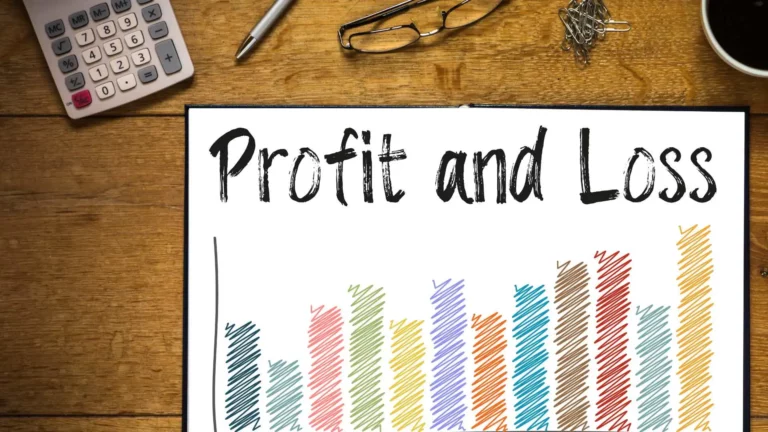
Thinking about starting a business or getting money for your big idea? You might be worried about keeping track of all the money stuff. But don’t worry! Keeping an eye on a company’s money situation is super helpful. It’s like telling a story about how well the business is doing.
This unique storybook, a Profit and Loss (P&L) statement, shows how much money the business makes and spends. And guess what? It’s not just numbers; it helps bring in people who might want to invest or buy the company. So, this P&L thing is vital to see how the business is doing financially!
What is a Profit and Loss (P&L) Statement?
The Profit and Loss (P&L) statement, or the income statement, is a crucial financial document that companies regularly create. It’s a simple report that shows how much money a company made and spent during a specific time.
In simple terms, the P&L statement has two main sections: revenue and expenses. Revenue is the money a company makes from selling its products or services. Expenses are a company’s costs to run its operations, like paying employees, buying materials, and covering rent or utilities. The P&L subtracts expenses from revenue to reveal the net profit or loss.
Analyzing a P&L statement helps businesses understand their financial health. If revenue is higher than expenses, it’s a profit! That’s good news. But if expenses outweigh revenue, it’s a loss. Businesses use this information to make intelligent decisions, like adjusting prices, cutting costs, or investing in strategies to boost profits and keep the business thriving.
Why are Profit and Loss (P&L) Statements Important?
Profit and Loss (P&L) statements matter because they show how well a business is doing. They help bosses figure out which parts of the business are making money and which ones might be losing it so that they can make more intelligent choices.
When you’re asking for a small business loan or looking for investors, you’ll need a P&L statement. Lenders and investors check this to see if your business is making enough money to handle expenses and debts, ensuring it’s worth supporting financially.
Plus, some rules say companies must make P&L statements. Doing this helps them follow the rules and stay on the right side of the law.
How Profit and Loss (P&L) Statements Work
A P&L statement reveals a company’s income and spending. The more detailed it gets, the better for folks inside or outside the business who want a clear look at how money flows, starting with what’s earned and ending with the final profit or loss. P&Ls vary in detail, from a basic overview of profits and losses to detailed breakdowns of sales and costs by product or service. They often compare numbers from past periods so experts can track changes over time.
P&Ls join two other key financial reports: the cash flow statement and the balance sheet. The cash flow statement shows how well a company turns stuff into cash, while the balance sheet gives a snapshot of a business’s financial stuff at a particular time—like assets, debts, and what’s left over.
To calculate the net income, use this formula: Net income = revenue – expenses + gains – losses
The P&L’s math is simple:
- Start with all the money from sales.
- Add extra income like interest or one-time gains.
- Subtract business costs and losses.
That leaves net income—the proof that the business made money. For example, if a business made $675,000 from sales but had $400,000 in costs and $55,000 in losses, its net income would be $255,000.
Types of Profit and Loss (P&L) Statements
Profit and Loss (P&L) statements aren’t one-size-fits-all. They come in different types, each telling a slightly different story about a company’s money. Choosing the right type is crucial because it shows how the business is doing in specific ways.
- First, there’s the single-step P&L. It’s like the quick summary version, where all the money made and spent gets added up in one shot. It’s a fast way to see if the company made a profit or loss without diving too deep.
- Then there’s the multistep P&L. This one’s more detailed, breaking down the money earned and spent into different sections. It’s like zooming in to understand where the money is coming from and where it’s going.
- A condensed P&L is like the short and sweet version of the detailed one. It groups expenses and keeps the extra details in other reports, making it a quick read.
These different P&Ls might look slightly different, but the real deal lies in how they’re made—whether using cash or accrual methods. This choice significantly influences profit evaluation, and adherence to Generally Accepted Accounting Principles (GAAP) prompts disclosure of these methodologies in the P&L footnotes.
Cash Method
The cash method tracks money when it’s received or paid. It counts income when you get the cash, not when you make a sale, and records expenses when you pay, not when you get a bill. It’s more straightforward and often used by small businesses, focusing on actual cash movements, but it only follows some of the rules set for accounting standards (GAAP).
Accrual Method
Public companies follow the accrual method, as per GAAP rules. This means they record income when earned, even if the customer still needs to pay. Revenue recognition shows a clearer view of a business’s activities by ignoring payment timing. Expenses are recorded when they happen, matching them with the time they occurred. For instance, if advertising costs come up in the third quarter, they’re recorded then, no matter when they’re paid. This method ties expenses to the period they relate to, aligning with the matching principle.
Example of a Profit and Loss (P&L) Statement
Generally, a P&L statement follows this given format. Here’s an example of a simplified P&L statement for a fictional company:
ABC Corporation – Profit and Loss Statement for the Year Ended December 31, 2022
| Categories | Amount ($) |
| Revenue | |
| Sales | $500,000 |
| Other Income | $20,000 |
| Total Revenue | $520,000 |
| Cost of Goods Sold | |
| Cost of Sales | $200,000 |
| Gross Profit | $320,000 |
| Operating Expenses | |
| Marketing | $50,000 |
| Salaries | $100,000 |
| Rent | $30,000 |
| Utilities | $20,000 |
| Depreciation | $15,000 |
| Other Expenses | $25,000 |
| Total Operating Expenses | $240,000 |
| Operating Income | $80,000 |
| Non-Operating Income and Expenses | |
| Interest Income | $5,000 |
| Interest Expenses | $3,000 |
| Net Non-Operating Income | $2,000 |
| Income Before Taxes (Pretax Income) | $82,000 |
| Tax Provision | $15,000 |
| Net Income | $67,000 |
What is the Difference Between a P&L Statement and a Balance Sheet?

A P&L statement and a balance sheet might look at similar money stuff, but they focus on different aspects of a company’s financial story.
The big difference? A P&L statement shows how much money the company made and spent over a set period, showing its revenues, costs, and expenses during that time.
Meanwhile, A balance sheet is like a snapshot showing what a company owns (assets), what it owes (liabilities), and what’s left for the owners (shareholder equity) at a certain moment. In short, one shows a company’s overall worth, while the other tells how it’s doing financially over time.
How Investors Use P&L Statements
Investors are like detectives examining a business; the Profit and Loss (P&L) statement is a crucial clue in their investigation. It helps them understand if a company is doing well financially or facing challenges.
When investors look at a Profit and Loss statement, they focus on two things: profitability and trends. They want to see if the company is making a profit or suffering losses. Positive trends, like increasing profits over time, show a healthy business. But if profits are declining, it might raise concerns.
Investors use P&L statements to make smart choices about buying or selling stocks. A strong, consistent profit history might attract more investors, while a shaky P&L could make them cautious. Understanding these statements helps investors decide where to put their money for the best possible returns.
Conclusion
A Profit and Loss (P&L) statement acts as a financial compass, revealing a company’s financial health by detailing its revenues and expenses during a specific period. It provides a dynamic view, reflecting earnings and costs as they happen rather than when cash transactions occur. This sought-after document doesn’t just depict profit or loss; it unveils crucial insights into a business’s operational efficiency and viability. Investors, lenders, and managers rely on the P&L statement as a key tool to gauge a company’s performance and make informed decisions about its future prospects.
FAQs
What is the statement of profit and loss items?
It summarizes a company’s income and expenses during a specific time.
What is the simple statement of profit and loss?
It’s a basic overview of a company’s earnings and spending in a certain period.
What is a good P&L percentage?
A good percentage varies by industry but generally aims for a high-profit margin, like 10% to 20%.
Is profit and loss the same as the income statement?
Yes, they’re the same—a report showing income, expenses, and profit over time.
How do you read a P&L for dummies?
Start with revenue, subtract expenses, and see what’s left—hopefully, it’s a profit. Understanding each line helps grasp it.

























